Driving skill, accurate timing, scenic roads, excellent camaraderie and … competition? Is this competitive overlanding? No. This is TSD rally. It doesn’t require a race car, a certification, it’s not expensive, and happens on public roads. It’s fun and you should try it.
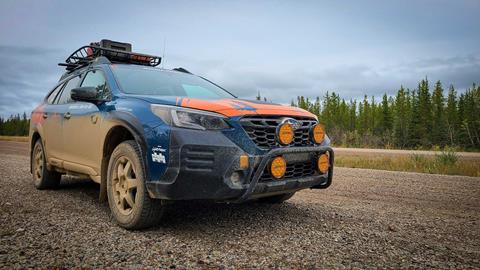
What Is TSD Rally?
TSD stands for “time-speed-distance.” TSD rally is a precision-based competition where a driver and navigator must stay on a specific route over many miles and go through checkpoints at specific times. It is not about going as fast as you can, it’s about arriving to a precise location as accurately as possible.
A route book will give you the prescribed speed at any given mileage and where to travel during the event. It’s up to you and your navigator to figure out the timing of it all.
Your route might be urban, rural, or a mix. It can be on pavement, gravel, dirt, or snow, or sometimes all the above. A TSD rally might be a few hours long, or possibly multiple weeks depending on the event. Regardless, TSD rally (sometimes known as “road rally” or “enduros”) combines motorsports competition and scenic driving with a dash of competition and camaraderie.
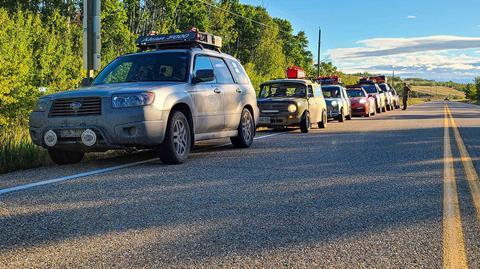
Where are TSD Rallies Held?
Most TSD rallies are held on public roads at or below posted speed limits. This means traffic laws must be obeyed. It also means you can use any road-legal vehicle. And—in theory—since you’ll never need to break the speed limit, you don’t necessarily need a fast vehicle. A Ford F-150 and a Ferrari F40 could, should, and would have an equal chance at winning, at least in theory. After all, it’s not about who goes fastest, it’s about who is most accurate.
By the way, a public road does not necessarily mean a paved road. Many TSD rallies are held on dirt and gravel. Some like the Alcan 5000 winter rally, are conducted on thousands of snow-covered highways and byways across Canada and Alaska. Of course, depending on the route’s surface, you may want to choose the appropriate vehicle.
Classing It Up
TSD rally teams are broken up into segments, or classes. Most classes aren’t usually so much concerned with your vehicle of choice as much as the equipment you’re using to navigate. Classes include SOP (“seat of pants”) which only generally allows a paper and pencil, and equipped classes that may allow a GPS and/or calculators. Unlimited classes let competitors use computers or apps that calculate the speed and distance and tell you the time, whether you’re early or late to a checkpoint. (They often plug into OBD-II ports.) There’s also usually a novice class for beginners.
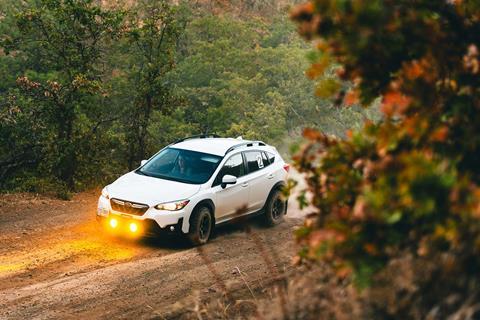
How A TSD Rally Works
The rally organizers, sometimes called rally masters, create a route then pre-run it keeping track of mileage. They determine where checkpoints are, and how long it should take (and the distance) between them. This route, as run by the rally master, is the car-zero time (CZT). This is the official time, speed, and distance for the rally. The whole event is based on this.
Keep in mind, the odometer in the rally master’s car might be slightly off compared to your vehicle. There is always an odometer calculation leg at the beginning of a TSD. This allows you to see how different your odometer is compared to the CZT. This should be noted and taken into account when calculating your mileage.
Entrants will be given a route book with instructions that are followed chronologically. Alongside this will be odometer readings and designated speeds. The instructions provide a variety of information from where to turn, signs to observe, and hazards to avoid.
For example, an instruction might say, at odometer reading 1.5 (miles), turn right onto Main Street. An instruction could also state that at mile 12, you’ll CAST 25 MPH. CAST stands for “change average speed to.” Familiarizing yourself with TSD rally terms will be very helpful. Many clubs offer a glossary to help novices with TSD-specific terms, and most are willing to assist those who need help. Note: Different clubs may also use different terminology.
There are often untimed, on-route sections called transits. These are sections between the end of one leg, and the beginning of another. They’re usually not very long. And while not timed, you’ll still need to arrive at the start of the next leg before your vehicle’s designated time to leave. Fun fact: On the longest TSD events, such as the Alcan 5000 rally, your transits can be a several hundred miles in one day!

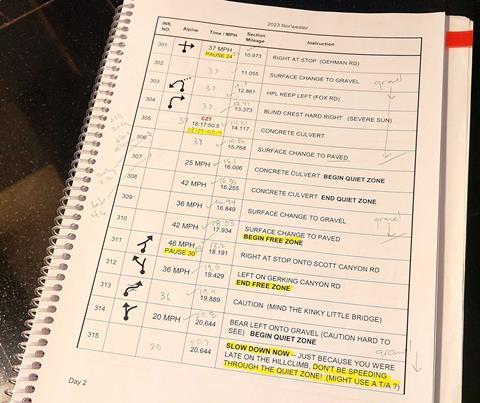
To Drive or to Navigate?
In many respects, the driver has the easier job in TSD rally; they just need to drive the car (also easier said than done). The navigator will have their head down relaying all the information to the driver. Driver/navigator communication is crucial.
There isn’t rule or anything regarding how a team communicates or gets this done and there isn’t a handbook on how exactly to do it. You’ll have to figure out the best system for your team.

The day of the rally, competitors will meet at the event’s starting location with route books in hand. You’ll be assigned a number, and that will correlate with your “out time.” In other words, if the rally starts at 10:00am and you are car #1, you leave the starting line at 10:01am. If you’re car #2, you’d be out at 10:02am, and so on. That first leg will typically be your odometer calibration leg. After this, there will be another place to stop and wait until your next out time, again, depending on your car number.
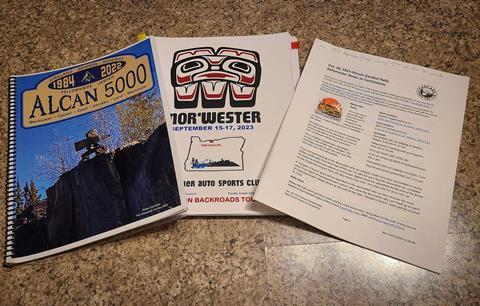
Checkpoints and Scoring
Like golf—but with way more driving and less swinging—the winner of a TSD rally will have the least amount of points. You accrue points for being early or late to a checkpoint. There is a magic (and unknown) number at which you should precisely arrive at each checkpoint based on the CZT plus your car number. Of course, you don’t know what each time is, only the distance and speed—but that’s the point. (There are long-form calculations that can be done for to determine the time between distances, however.)
Back in the day, all TSD rallies had manned checkpoints with a sign and a person with a stopwatch recording when you arrived and marking down your performance. However, rally clubs are now utilizing a GPS system eliminating the need for people to stand outside and use stopwatches. This system is called Richta.
The rally master loads in the checkpoint’s GPS location into the app. When competitors run the rally (and use the app), the smartphone will then audibly tell you whether you’re early, late, or on time, complete with the time you’re off (or a zero if you’re perfect). If you show up five seconds early (or late) to a check point, you’re penalized five points. A perfect TSD score is zero which means you crossed through the checkpoint at the same time as the rally master did when they set the course.
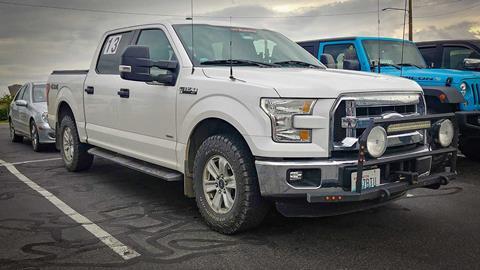
Don’t Delay: Time Allowances
Since TSD rallies are on public roads, there are public things that can get onto the route. This includes slow drivers, farm equipment, farm animals, train crossings, stop lights, and other such recreational hazards, not to mention the unforeseen yet desperately needed bathroom break.
What happens if you get delayed by any of this stuff? You’ll be allowed to use a time allowance or time deck. These are various increments of time that let you equal up your delay. Let’s say you get stopped at a traffic light for 30 seconds. You can take a 30-second time allowance and add it to your time without penalty. TIP: get a digital kitchen timer or stopwatch for instances like this. If you get stopped, start the timer to help know how much time allowance you’ll need.
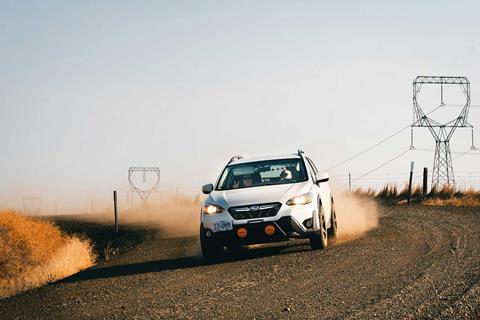
TSD Tips & Tricks
TSD rally is one of those things that requires experience to master, and there’s no substitute for seat time. However, it’s also a good idea to learn as much about TSD rally before you either drive or navigate. Here are some tips and tricks for newcomers.
- Find the local club in your area. Reach out to the event organizer if you’re new and see if there are any materials or classes offered. Some clubs, such as Oregon’s Cascade Sports Car Club Gear Grinders, have a novice class early in the year. They also have a novice page on their website.
- Learn the terms. TSD rally can be filled with specific words and abbreviations. NRI, CAST, ITIS, ONTO, and others will mean different things. Different clubs will often have slightly different rules, so familiarize yourself with that club’s terms before you rally.
- Stay on course. There are lots of things to be aware of on a TSD rally. But if you’re new to TSD, don’t worry about doing great your first time (or second, or third …). Instead, focus on staying on course. It can be very easy to get lost!
- Learn to communicate. A driver is going to take wrong turns. A navigator will provide wrong directions. Cut each other slack and remember this is supposed to be enjoyable. Good communication will help you do better and have more fun.
- Take the right vehicle. Make sure the vehicle you take is up to the course’s challenges. Also, know what kind of course it is. Is it all paved, part gravel, mostly gravel? The rally organizer will be able to tell you.
Where To Find a TSD Rally?
Many metropolitan areas have TSD rally groups. For example, my town of Portland, OR, has the Cascade Gear Grinders, part of Cascade Sports Car Club. The Seattle area has the Northwest Rally Council and the Rainer Auto Sports Club. The Sports Car Club of America (SCCA) also has road rally events. Some Googling will bring up clubs in your area.
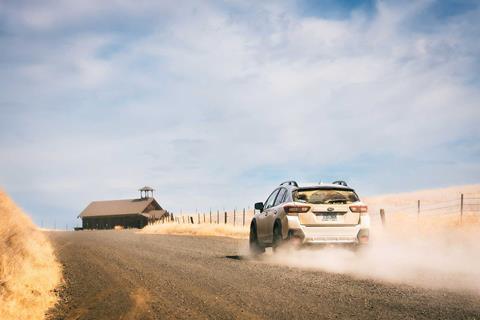
TSD Is a Fun Adventure
TSD rallies are approachable. They’re generally inexpensive, you can use whatever vehicle you have, and they’re on public roads. They marry travel, motorsports, and excellent community that isn’t found in many other forms of motorsports. While they have a learning curve, they’re addictive and a ton of fun whether you’re a novice or an experienced rallier. If you’re like me, you might find that TSD rally combines cars, travel, adventure, and competition into one fun experience.
Access More Great Stories!
For more informative articles like this, consider subscribing to OVR Magazine in print or digital versions here. You can also find the print edition of OVR at your local newsstand by using our Magazine Finder.




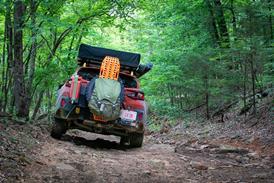
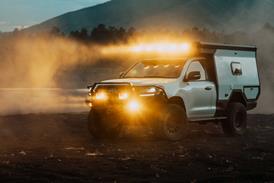
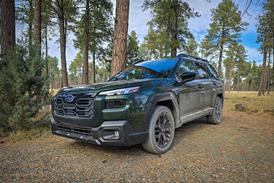
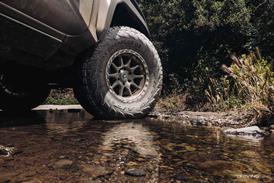

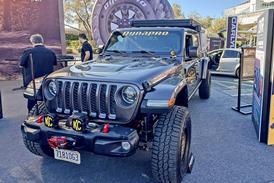
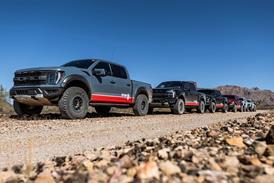


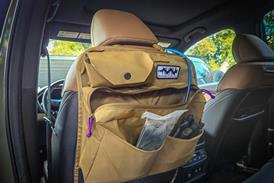
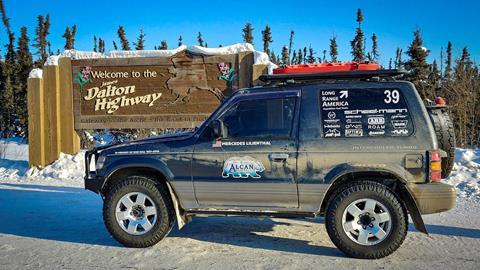






No comments yet